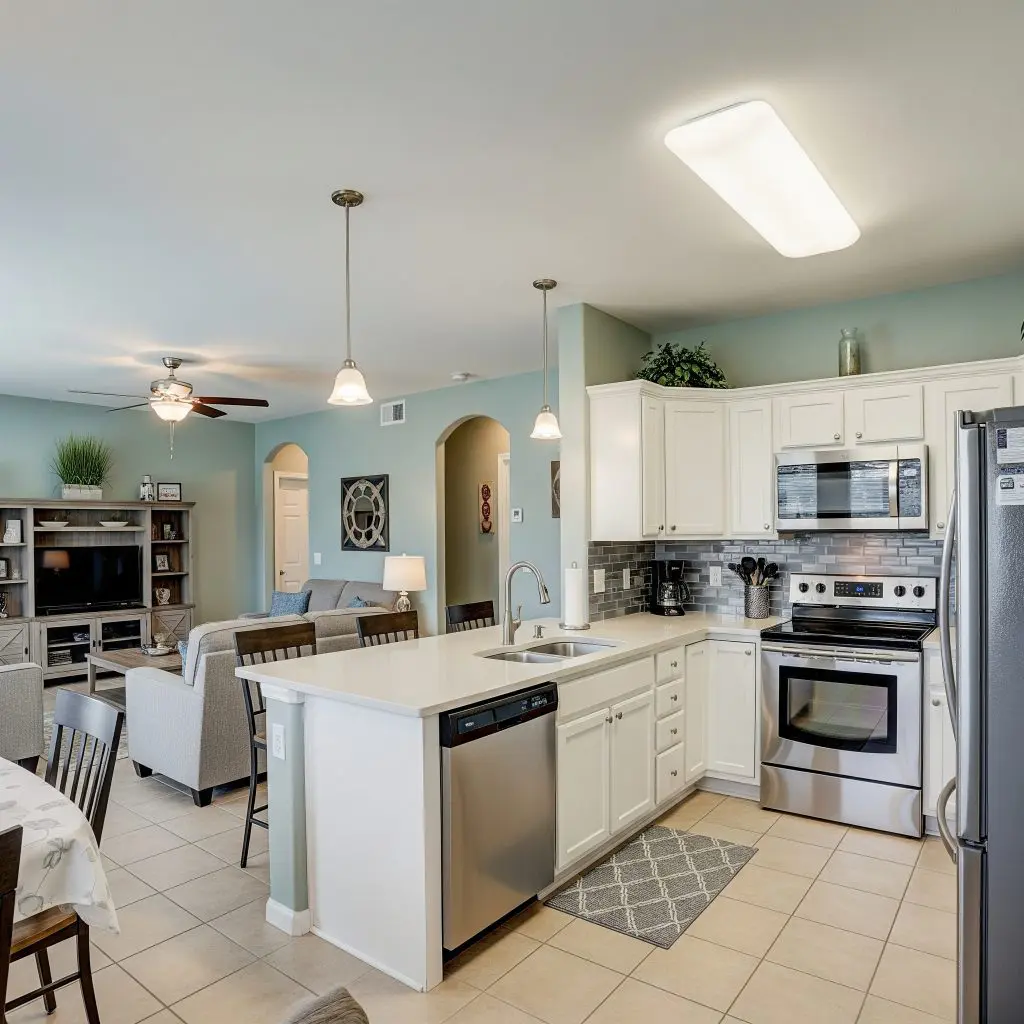San Antonio Inflation Budgeting & Real Estate Investment Guide 2025
Amid the prevailing inflationary pressures in 2025, San Antonio stands out as a resilient U.S. city with unique real estate investment opportunities and distinct budgeting considerations. Whether you are a local looking to fortify your financial plan or an investor seeking the best markets during periods of high inflation, this comprehensive guide explores the intricacies of San Antonio’s housing market, economic outlook, and strategic approaches to inflation-proof your assets and budget.
- San Antonio Inflation Budgeting & Real Estate Investment Guide 2025
- San Antonio Economic Outlook and Inflation Trends (2025)
- Cost of Living and Budgeting Considerations in San Antonio
- San Antonio Real Estate Market Overview (2025)
- Best Real Estate Opportunities in San Antonio: Urban Rental Properties
- San Antonio Property Taxes and Regulatory Environment
- Local Investment Incentives
- Key Economic Policies in San Antonio Affecting Real Estate
- Demographic & Population Trends
- Inflation Hedging Strategies Using Local Real Estate
- District and Neighborhood Analysis
- Case Studies: San Antonio Success Stories
- San Antonio Real Estate & Budgeting in 2025: Strategic Takeaways
San Antonio Economic Outlook and Inflation Trends (2025)
- Population Growth: San Antonio’s population is projected to surpass 1.6 million in 2025, with steady growth driven by its strong job market, affordable living, and cultural vibrancy.
- Inflation Rate: Local CPI data shows San Antonio’s inflation is tracking close to the national average, with recent spikes in housing, transportation, and food costs. Inflation in the city is estimated at approximately 4.8% for 2025.
- Economic Drivers: Key sectors include healthcare (particularly the South Texas Medical Center), cybersecurity, military, tourism, and a rapidly expanding tech corridor.
Cost of Living and Budgeting Considerations in San Antonio
As inflation impacts daily expenses, effective budgeting is critical. Here’s a breakdown of cost-of-living adjustments and local spending:

- Housing: Median home prices currently average $325,000 (up 14% YoY), while median rent for a two-bedroom apartment is around $1,400 monthly—both still below many peer metros, but rising steadily.
- Utilities: Typical monthly utilities hover around $170 for a 2-bedroom apartment, with increases driven by energy inflation.
- Groceries & Transportation: Groceries are up 7% year-over-year, and rising gas prices have heightened demand for homes near mass transit corridors.
To buffer against inflation, residents are shifting spending priorities toward essentials and exploring hedges such as fixed-rate mortgages and local inflation-resistant investments.
Need capital? GHC Funding offers flexible funding solutions to support your business growth or real estate projects. Discover fast, reliable financing options today!
Test Your Expertise: The Complexities of the 1031 Exchange

As a sophisticated real estate investor, you understand that the 1031 Exchange is a cornerstone strategy for tax deferral and wealth accumulation. But beyond the basics, the intricacies of the 1031 Exchange rules can pose significant challenges. This quiz is designed to test your in-depth knowledge and highlight critical nuances that separate casual investors from true experts in 1031 Exchange transactions.
Instructions: Choose the best answer for each question.
⚡ Key Flexible Funding Options
GHC Funding everages financing types that prioritize asset value and cash flow over lengthy financial history checks:
-
Bridge Loans: These are short-term loans used to "bridge the gap" between an immediate need for capital and securing permanent financing (like a traditional loan or sale). They are known for fast closing and are often asset-collateralized, making them ideal for time-sensitive real estate acquisitions or value-add projects.
-
DSCR Loans (Debt Service Coverage Ratio): Primarily for real estate investors, these loans are underwritten based on the property's rental income vs. debt obligation ($\text{DSCR} = \text{Net Operating Income} / \text{Total Debt Service}$), not the borrower's personal income or tax returns. This offers flexibility for those with complex finances.
-
SBA Loans: The Small Business Administration (SBA) guarantees loans offered by partner lenders. While providing excellent terms (long repayment, lower rates), the application process is typically slower than private/bridge funding, often making them less suitable for immediate needs. SBA eligibility heavily relies on the DSCR metric for repayment assessment.
🌐 Learn More
For details on GHC Funding's specific products and to start an application, please visit their homepage:
The Ultimate DSCR Loan for Rental Property Quiz

Are you looking to expand your real estate investment portfolio? A DSCR loan might be the perfect tool to help you achieve your goals without relying on traditional income documentation. Test your knowledge with this quiz to see if you're ready to master the intricacies of a DSCR loan for rental property.
San Antonio Real Estate Market Overview (2025)
The city’s housing market remains robust with continuous inward migration. San Antonio combines job growth, affordability, and quality of life—making it an attractive investment environment during high inflation periods:
- Days on Market: Homes sell in a median of 32 days.
- Percent Over Asking: 18% of homes close above list price, highlighting competitive bidding in select neighborhoods.
- Rental Demand: The rental market is especially hot in urban and emerging districts, as first-time buyers delay purchases due to interest rates.
Best Real Estate Opportunities in San Antonio: Urban Rental Properties
For 2025, San Antonio’s best inflation hedges are urban rental properties. These assets benefit from population growth, steady demand, and lease structures that allow periodic rent inflation adjustments. Key local opportunities include:
Top Neighborhoods for Urban Rental Investment
- Downtown/River Walk: High walkability, tourism appeal, and strong rental yields. Mixed-use developments and mid-rise apartments see high occupancy rates.
- Pearl District: A redeveloped historic area with a blend of luxury lofts and trendy rentals. Attracts young professionals and creative industries.
- Southtown (King William/Lone Star): Known for artistic vibes and renovated historic homes. Rising demand fuels steady rent increases.
- Medical Center: Proximity to major employers ensures consistent demand from healthcare professionals and students.
- Northwest (Alamo Ranch/Helotes): Booming suburban growth with new build-to-rent communities and lower property taxes.
Rental Property Highlights & Investment Returns
- Typical cap rates for urban rentals: 5.0% – 7.5%.
- Luxury and mid-market apartments outperform other asset types on rent growth (up 9% YoY in the Pearl District).
- Short-term rentals (Downtown, around the River Walk) are robust, aided by the strong tourism sector.
San Antonio Property Taxes and Regulatory Environment
- Property Tax Rate: Bexar County’s combined city and county effective property tax rate is roughly 2.3%, higher than the national average but offset by lower home prices.
- Homestead Exemptions: San Antonio offers increased homestead exemption limits in 2025, reducing taxable value for owner-occupied residences (up to $40,000 off assessed value).
- Landlord-Friendly Policies: Texas maintains strong landlord protections, favoring rapid evictions for non-payment and limited rent controls.
Local Investment Incentives
- Opportunity Zones: Multiple urban census tracts qualify, notably in the near East Side and West Side, enabling capital gains deferrals and potential exclusions.
- City Revitalization Grants: Grants and low-interest loans available for adaptive reuse and urban infill projects, especially downtown.
Key Economic Policies in San Antonio Affecting Real Estate
- Continued investment in transit and downtown revitalization, boosting demand for centrally located rentals.
- Several bond-funded school district upgrades improving neighborhood desirability and property values on the city’s North Side and Far West.
- Expansion of cyber and healthcare campuses, increasing high-earning renter populations in Medical Center and Northwest corridors.
Demographic & Population Trends
- Net migration consistently positive, with recent increases from California, Illinois, and Florida.
- Median age remains young at 34.1 years, supporting robust rental demand and entrepreneurial growth.
- Cultural vibrancy (Fiesta, culinary scene) and military presence keep demand resilient in recessions and inflationary cycles.
Inflation Hedging Strategies Using Local Real Estate
- Residential Rentals: Annual lease adjustments allow landlords to pass inflationary costs on to tenants.
- Short-Term Rentals: Airbnb and VRBO properties outperform traditional rentals, especially downtown and near the River Walk during major events.
- Mixed-use Properties: Investing in retail-residential hybrids (esp. in Pearl and Southtown) diversifies income streams and reduces risk.
- Multi-Family Conversions: Adaptive reuse of small commercial buildings into apartments is incentivized by city tax abatements.
District and Neighborhood Analysis
| Neighborhood | Investment Type | 2025 Outlook |
|---|---|---|
| Downtown & River Walk | Urban rentals, STRs | High occupancy, premium rents |
| Pearl District | Luxury apartments, mixed-use | Top rent growth, gentrification opportunities |
| Southtown | Historic rentals, BTR | Millennial appeal, value appreciation |
| Medical Center | Mid-market apartments | Steady demand from healthcare/military renters |
| Alamo Ranch & Helotes | Suburban single-family, BTR | Rapid population, lower taxes |
| East Side | Emerging neighborhood, OZ projects | Revitalization, high upside |
Case Studies: San Antonio Success Stories
- Pearl District Adaptive Reuse: Investors redeveloped an old brewery into luxury rentals and retail, generating double-digit annual returns and catalyzing district-wide appreciation.
- East Side Opportunity Zone: Urban infill apartments received city tax abatements, stabilized occupancy rates at 96%, and asset values up 21% since 2022.
- Alamo Ranch BTR Portfolio: Local syndicate pooled funds to purchase and rent out townhomes, realizing consistent cash flow and 8% capital appreciation in 12 months—an inflation-beating portfolio even after rising interest rates.
San Antonio Real Estate & Budgeting in 2025: Strategic Takeaways
- Prioritize Inflation-Hedged Assets: Urban rentals and mixed-use properties provide consistent cash flow and natural inflation adjustment.
- Budget for Rising Costs: Secure fixed-rate mortgage financing, anticipate higher property taxes and insurance in annual planning, and leverage homestead exemptions.
- Focus on High-Growth Neighborhoods: Pearl, Southtown, and Medical Center offer superior rent growth and tenant demand; monitor up-and-coming East Side for potential windfall returns.
- Maximize Local Incentives: Tap into opportunity zones, adaptive reuse grants, and energy efficiency rebates for new investments.
- Plan for Transit-Oriented Developments: Properties near VIA Metropolitan Transit corridors and new transit hubs outperform in price and rental rates as commuting costs rise.
Final Thoughts
✅ Small Business Resources
-
SBA – Small Business Administration
https://www.sba.gov - SCORE Mentors (Free Mentoring & Workshops)
https://www.score.org - Small Business Development Centers (SBDC)
https://americassbdc.org
Are You an SBA Real Estate Loan Expert?

Test your in-depth knowledge on using SBA Loans for owner-occupied commercial Real Estate acquisition. These questions delve into the critical details that can impact your business's growth and financial strategy.
San Antonio’s real estate market, when navigated with informed, strategic budgeting and local market insight, presents one of the strongest inflation hedges and investment returns in the U.S. for 2025. Focus on urban rentals and emerging neighborhoods, monitor economic developments, and incorporate city-specific incentives to maximize returns while maintaining your financial resilience in an inflationary landscape.
Get a No Obligation Quote Today.
✅ Real Estate Investor Resources
-
AirDNA (Short-Term Rental Data)
https://www.airdna.co - Rentometer (Rent Comps)
https://www.rentometer.com - Zillow Research & Data
https://www.zillow.com/research
DSCR Loan IQ Quiz!

Test your knowledge of Debt Service Coverage Ratio (DSCR) loans!



